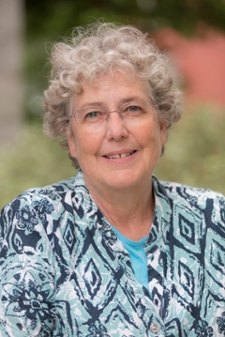Accommodations and Resistances: Hawai’i’s Chinese Population Shows How Immigrant Groups Succeed
By Tom PorterThe immigrant experience is something that fascinates Nancy Riley. “The story of immigrant groups and how they get accepted, or not, is a phenomenon seen all over the world,” said the A. Myrick Freeman Professor of Social Sciences. As a sociologist, Riley focuses on the Chinese population in Hawai’i* and how it climbed from the bottom to the top of the social and economic ladder in less than half a century.

Riley lived in the Pacific island state for twelve years before coming to Bowdoin in 1992, and has spent an additional three or more years there since, having taking nearly all her sabbaticals there. She’s currently working on a book about the Chinese experience in Hawai’i.
“The Chinese began arriving in numbers in the late nineteenth century as plantation laborers, living in poverty and viewed with disdain by the ruling white minority, who considered them to be disease-ridden and barely human,” said Riley at a faculty seminar in late September. Her talk was titled “Accommodations and Resistances: Chinese and Public Health in Hawai`i” and it paid particular attention to how this Asian minority population achieved a level of influence in the medical field that was disproportionate to its size.
“It’s interesting to note that, by 1950, nearly a quarter of doctors and dentists in Hawai’i were Chinese, despite only comprising 6 to 7 percent of the population.” At the turn of the century, she explained, there were just a handful of them, and they were mostly trained in traditional Chinese medicine, whereas their later counterparts were college-educated practitioners of western medicine.
How did this happen? How did an immigrant population of rural laborers who were not even granted US citizenship until 1943 (forty-four years after Hawai’i was made a US territory), achieve such prominence? “Part of it,” said Riley, “is that they just ‘dug in.’ They realized that education was the key to success, so they worked hard to master the English language and get their children into the best schools and universities.” It’s especially impressive, she added, when you consider that the white community, who made up about 20 percent of the population, tried hard to keep them out. “But the Chinese kept pushing, and it helped that there weren’t any formal laws barring them from higher education.
“Another part of it is playing by the rules, the rules set by whites. Consumption is such a big part of immigrant achievement,” said Riley, “but that doesn’t just mean the buying of houses and cars. It’s also about buying into the system, about getting the best education, the best careers, which in the case of Hawai’i’s Chinese population, effectively meant ‘becoming white.’”
Hawai’i was made a US state in 1959, and today, said Riley, the population is much more mixed and less divided. “Nevertheless, when you study the Chinese experience there in the first half of the twentieth century, it provides an interesting lesson in the history of racial politics: If you want to succeed in a new land, maybe you have to behave yourself and play by the white rules!”
*Although the legal of spelling of Hawai'i, as defined by federal statute, excludes the apostrophe (known as a diacritical mark or okina), the traditional Polynesian spelling is now in widespread usage, including on street signs and maps. As Riley points out, the okina is the equivalent of a letter, "so missing it out might be like spelling Maine as 'Mine.'"